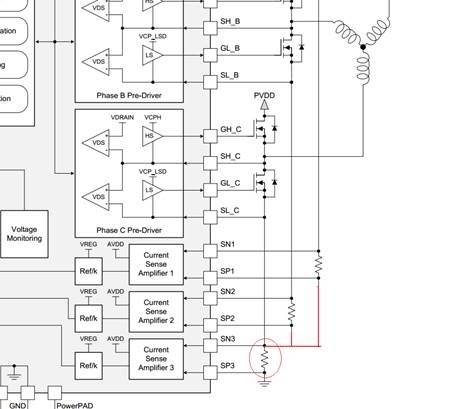Hi Sir,
My customer uses DRV83055-Q1 in water pump, two question need to be answered, thank you.
1. Operational temperature
In customer's board, the DRV83055-Q1 shows ~70 ℃ at the top surface in below condition, and it means the operational maximum ambient temperature is absolutely limited to ~80 ℃? Could you give me the maximum ambient temperature our EVM can work with? EVM's DRV8305N show ~60 ℃ in the same condition.
Condition: 1) Room temp; 2) Connected to MOSFET, but without motor; 3)12V input; 4) LDO load ~7mA
2. Current sense amp
Could we use one of the current sense amplifier to sense the low side total current as below?
Best regards

